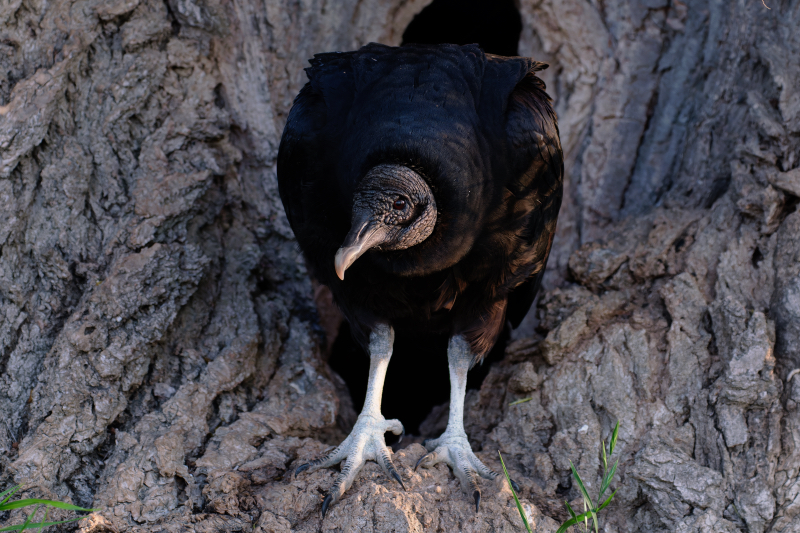While visiting Sequoyah National Wildlife Refuge in Oklahoma, I had a chance to photograph a Black Vulture up close. I was driving along the auto tour road when I spotted a large, hollow tree right next to the road. At the base of the tree was a hole, and sitting at the edge of it was a Black Vulture. I slowed down and could see that a pair of vultures had made a nest inside the tree.

I grabbed my camera, and right then, one of the adults hopped out of the hole and onto the ground. It stood at the base of the tree for a while, giving me a great view. I took several photos, especially focusing on its feet. They caught my eye because they looked so different from the talons I’m used to seeing on raptors like hawks or eagles.

Built for Scavenging
Black Vultures have long, blunt talons that don’t curve sharply like those of hunting birds. Their toes are slim and long, more suited for walking than for grasping. These feet help them move easily across the ground while they search for carrion. They’re not built to grab or kill prey. Unlike hawks or owls, which use their feet to catch and hold animals, vultures use theirs mainly for balance and movement.
How They Find Food
Their survival depends more on observation than aggression. Black Vultures have sharp eyesight and often follow other scavengers or look for circling Turkey Vultures to find food. Sometimes, they also use their sense of smell to locate carcasses. They tend to feed in groups and are social while eating.
Their feeding behavior differs from that of Turkey Vultures. Turkey Vultures often use their feet to pin down their food. But in all my time watching Black Vultures, I’ve never seen them do that. They rely entirely on their strong, hooked beaks to tear flesh.
Form Meets Function
Watching that vulture near its nest reminded me that every animal is built for its way of life. The feet of a Black Vulture aren’t weapons—they’re tools for walking, standing, and staying balanced. Every part of a scavenger’s body works together to help it survive. And when you look closely, those small details tell a bigger story about the bird’s role in nature.
Spending time with wildlife like this makes me notice these things. Even something as simple as a vulture’s feet can reveal a lot about how nature works.
Gear Used:
- Camera: Fujifilm X-T3
- Lens: Canon EF 100-400 mm f/4.5-5.6 L IS II (attached with a Fringer EF-FX Pro)
Technical:
- Location: Sequoyah National Wildlife Refuge (Oklahoma)
- Date and Time Taken: April 11, 2021 (07:37 A. M.)
- Aperture Priority
- Aperture: f8
- Shutter speed: 1/640 (as determined by the camera)
- ISO: 2000
- Exposure Compensation: -1.7
- Focal Length: 400 mm
